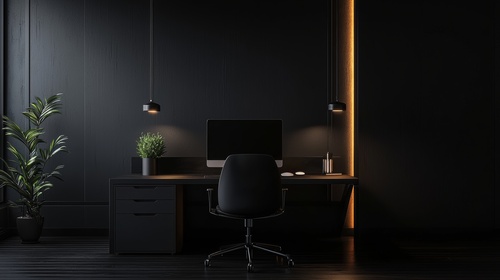Within interior design, window coverings are commonly viewed as essential for practical purposes rather than as design elements. However, with a strategic approach, window coverings can transcend mere functionality to become stylish focal points that elevate a room’s ambiance.
This article will delve into inventive methods for integrating window blinds into your interior design, highlighting their adaptability and capacity to enhance any environment. In interior design, every aspect is significant – including the treatment of windows. They provide privacy and control over light levels and offer an opportunity to add texture, color, and visual interest to a room.
Enhancing Visual Appeal with Texture and Pattern
One of the easiest ways to incorporate window blinds into your interior design is by using them to add texture and pattern to your windows. Instead of opting for plain, neutral blinds, consider choosing blinds with interesting textures or patterns that complement your existing decor. For example, if you have a minimalist or Scandinavian-inspired interior, wooden blinds can add warmth and texture to the space. Alternatively, patterned shades can inject personality and visual interest into a room as a focal point that ties the design together.
Creating Visual Continuity with Color Matching
Another efficient method of incorporating these window treatments into your interior design is by utilising them to establish visual harmony throughout your space. Selecting these coverings to either match or complement the colors utilised elsewhere in the room can foster a sense of harmony and coherence. If your interior design predominantly features neutral colors, choose blinds matching this palette. This will guarantee a seamless blend between your windows and the overarching decorative theme. Alternatively, you can use these coverings as accent pieces by choosing a bold color that contrasts with the surrounding walls or furnishings, adding a pop of color and visual interest to the space.
Maximising Space with Customisation
In rooms where space is at a premium, such as small bedrooms or cosy living areas, these coverings can be customised to maximise functionality without sacrificing style. For example, in rooms with limited wall space for traditional curtains or drapes, sleek and streamlined roller shades or Roman shades can provide a practical solution that is manageable for the space. Additionally, motorised shades can be installed in hard-to-reach or awkwardly shaped windows, allowing for easy operation and precise control over light levels.
Achieving Balance with Layering
Layering window treatments is another effective way to incorporate these coverings into your interior design while achieving a balanced and layered look. For instance, you can pair sheer curtains with Venetian blinds or wooden shutters to create depth and dimension at the windows. This combination allows for flexibility in light control – you can enjoy diffused natural light during the day by pulling back the curtains and privacy and insulation at night by closing the shades. Layering window treatments add visual interest and complexity to a room, creating a sense of luxury and sophistication.
Enhancing Functionality with Smart Technology
Smart home technology is becoming increasingly popular today; these coverings are no exception. By investing in motorised or automated blinds, you can enhance the functionality of your window treatments while adding a touch of modernity to your space. Intelligent shades can be programmed to open and close at specific times of the day, allowing for effortless control over light levels, privacy, and energy efficiency. Specific models can also synchronise with your smartphone or voice-activated assistant, providing unparalleled convenience and user-friendly operation.
Incorporating window blinds into your interior design doesn’t have to be a daunting task. With some creativity and imagination, they can become integral elements of your space, adding style and functionality. Whether you’re looking to add texture and pattern, create visual continuity, maximise space, achieve balance through layering, or enhance functionality with smart technology, there are countless ways to incorporate these coverings into your design scheme. So why wait? Start exploring the possibilities today and transform your space with the timeless elegance of the shades.



